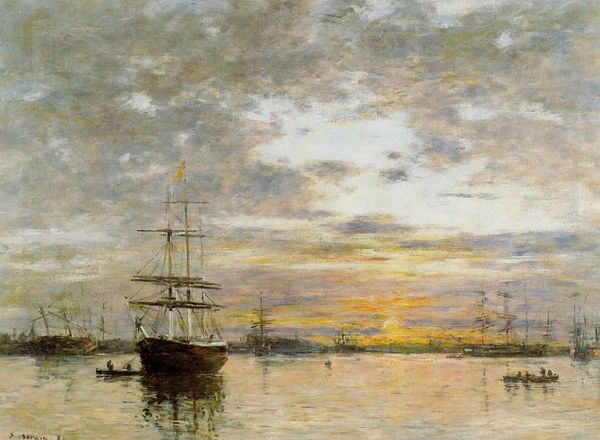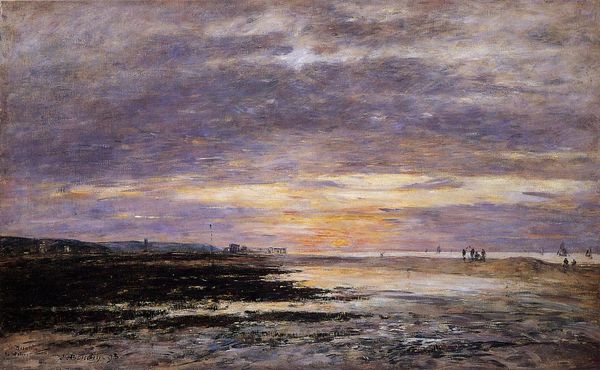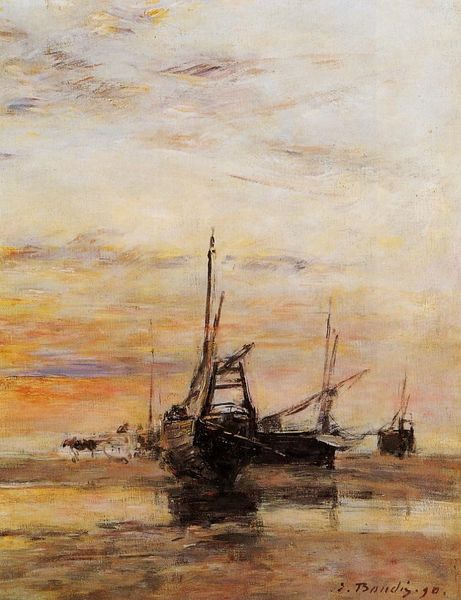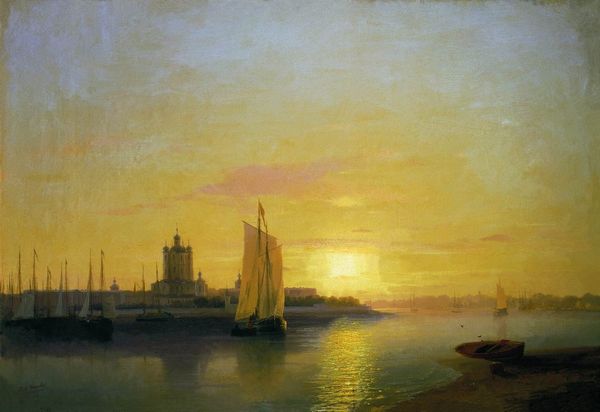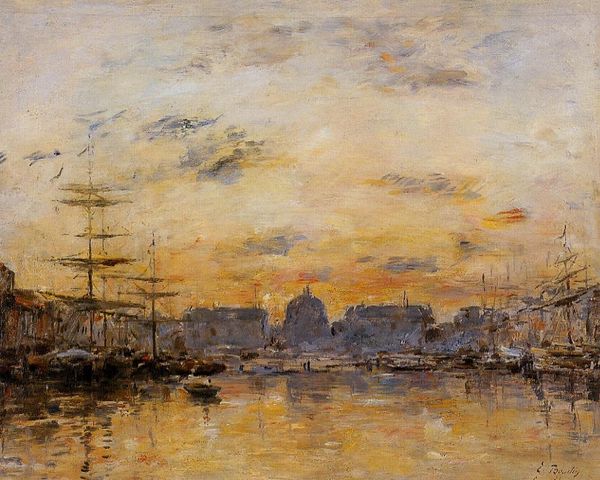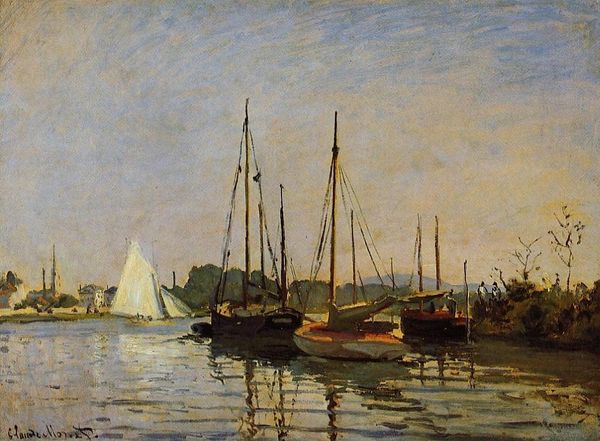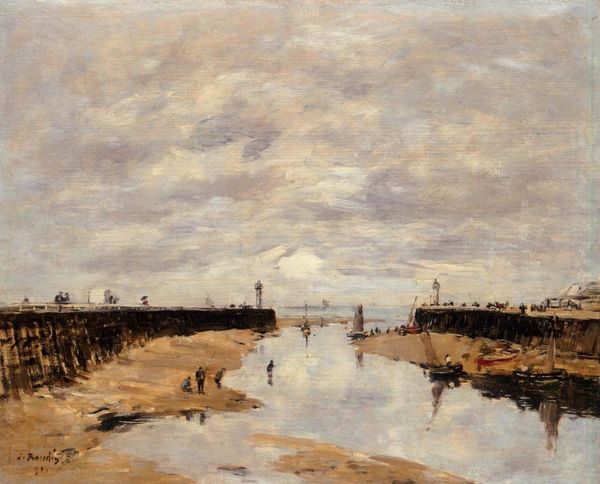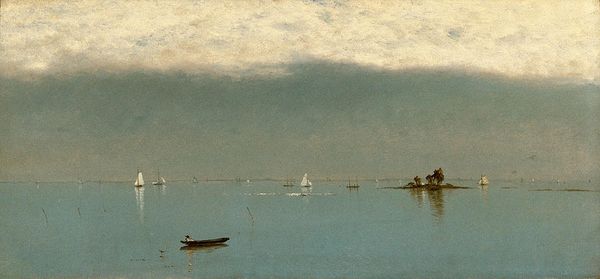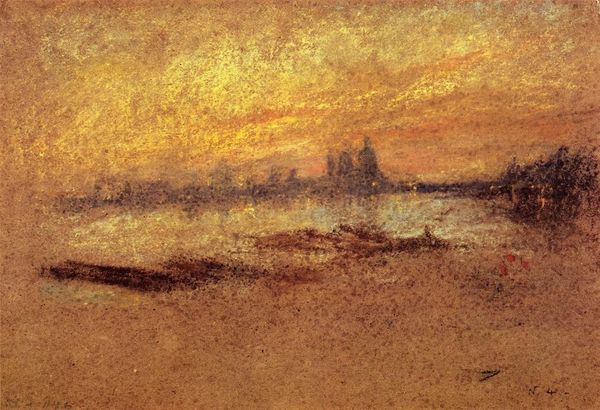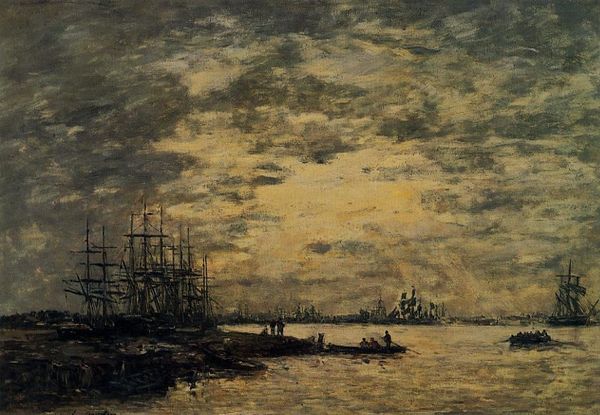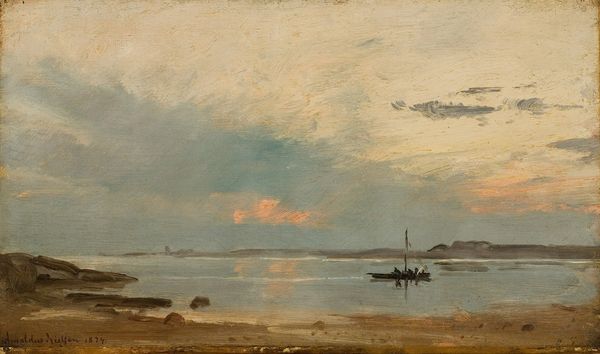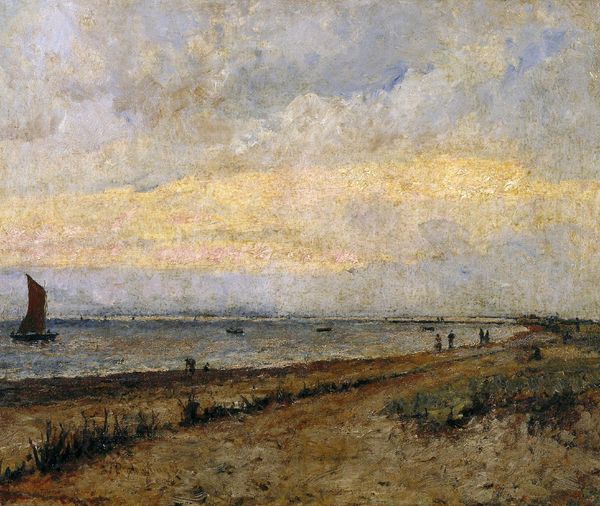
Copyright: Public domain
Editor: Here we have Eugène Boudin's "Le Havre. Sunset at Low Tide," painted in 1884. It's an oil painting with a gorgeous golden light, but it also feels strangely… still, almost melancholic. What can you tell me about it? Curator: Boudin's coastal scenes often mask the complex socio-economic realities of 19th-century France. While seemingly capturing a fleeting moment of natural beauty, these images existed alongside profound industrial and social shifts. How might this serene sunset belie the lived experiences of the working class in a port city like Le Havre? Editor: I guess I hadn't thought about it that way. The sunset is so prominent; it almost feels divorced from the figures on the beach. Curator: Precisely. Consider the labor required to maintain a bustling port, the class divisions inherent in maritime trade. Boudin positions the viewer to passively consume the "beauty" of the landscape, potentially obscuring these critical power dynamics. Are we meant to reflect upon the exploitation of labor hidden beneath this picturesque facade? Editor: So, you’re saying that while the painting itself doesn't explicitly depict these issues, its context invites us to consider them? Curator: Exactly. This invites us to examine the intersections of aesthetic pleasure and social awareness, pushing beyond a purely formal reading to explore how the painting functions within a broader societal narrative. Does the ‘sublime’ sunset distract from or highlight the realities of the individuals whose livelihoods depend on the sea? Editor: That gives me a lot to think about. I definitely see this differently now. Thank you! Curator: Likewise! It's these layered readings that make engaging with art history so crucial to understanding our present moment.
Comments
No comments
Be the first to comment and join the conversation on the ultimate creative platform.


